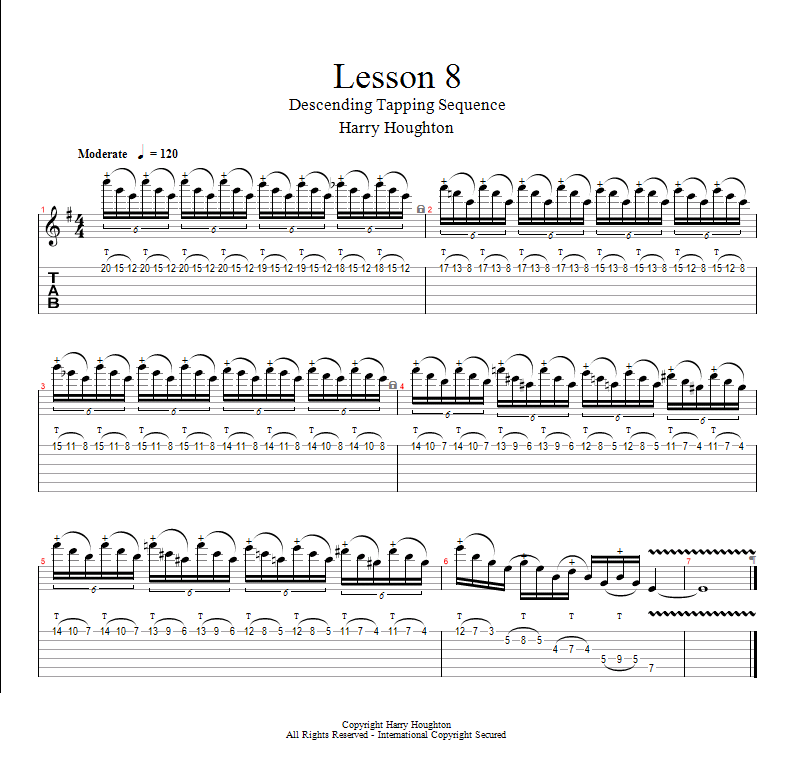This month we will be looking at a descending tapped sequence based loosely around E minor with some diminished chords thrown in as well. The notes we will be tapping create triads, and by changing just one note by a semitone we can get different triads in inversions of their root position which we will help us descend down the neck. Remember, all taps with the right hand should be performed with the second finger and the pick should be held as normal between the thumb and first finger. This way, when you are playing you are able to change between tapping and picking without having to re-arrange the pick in your hand. Also, use the fleshy part of your right hand (little finger side) to mute the unused strings.
We begin by tapping at the twentieth fret of the high E string on the C note pulling off to the G at the fifteenth fret, and then pulling off again to the E at the twelfth fret. These three notes create a C triad in second inversion (III, V, I as opposed to I, III, V which would be root position). This is to be played in sextuplets (six notes per beat) and we repeat this pattern for two beats (or four cycles of the three note pattern). On the third beat of the first bar we flatten the C note to a B at the nineteenth fret to form an E minor triad in root position for one beat (or two cycles of the three note pattern), then flatten it again to a B flat at the eighteenth fret creating an E diminished triad for the fourth and final beat of the bar.
The second bar follows the same pattern but with different triads. The first two beats use an F triad in second inversion (V,I,III) at the seventeenth, thirteenth and eighth frets. Then we have a Csus4 triad in root position (I,IV,V) for beat three at the fifteenth, thirteenth and eighth frets. Then finally a C major triad for beat four at the fifteenth, twelfth and eighth frets. The third bar then changes to a C minor triad in root position (I, III, V) for two beats at the fifteenth, eleventh and eighth frets, then changes to a C sus2 flat 5 chord (I, II, V or C,D and G flat) for two beats at the fifteenth, tenth and eighth frets.
The next two bars consist of a minor triad shape that descends chromatically every beat. We start with a B minor triad at the fourteenth, tenth and seventh frets. We then descend chromatically through B flat minor, A minor and A flat minor in beats two, three and four before repeating this bar.
The final bar consists of a tapped E minor 7 arpeggio over five strings in sixteenth notes. We begin by tapping at the E at the twelfth fret of the high E string and pulling off using our fourth and first fingers to the B at the seventh fret, and the G at the third. We then hammer on from nowhere with our second finger to the E at the fifth fret of the B string, then tap the G at the eighth fret of the B string and pull off back to the E. Next we hammer on from nowhere with our first finger to the B note at the fourth fret of the G string, and then tap and pull off again but this time at the D note at the seventh fret of the G string. This gives us our minor seventh note, and to complete this arpeggio we again hammer on from nowhere with our second finger to the G at the fifth fret of the D string, tap and pull off from the B at the ninth fret and finally hammer on to the E at the seventh fret of the A string with our third finger.







